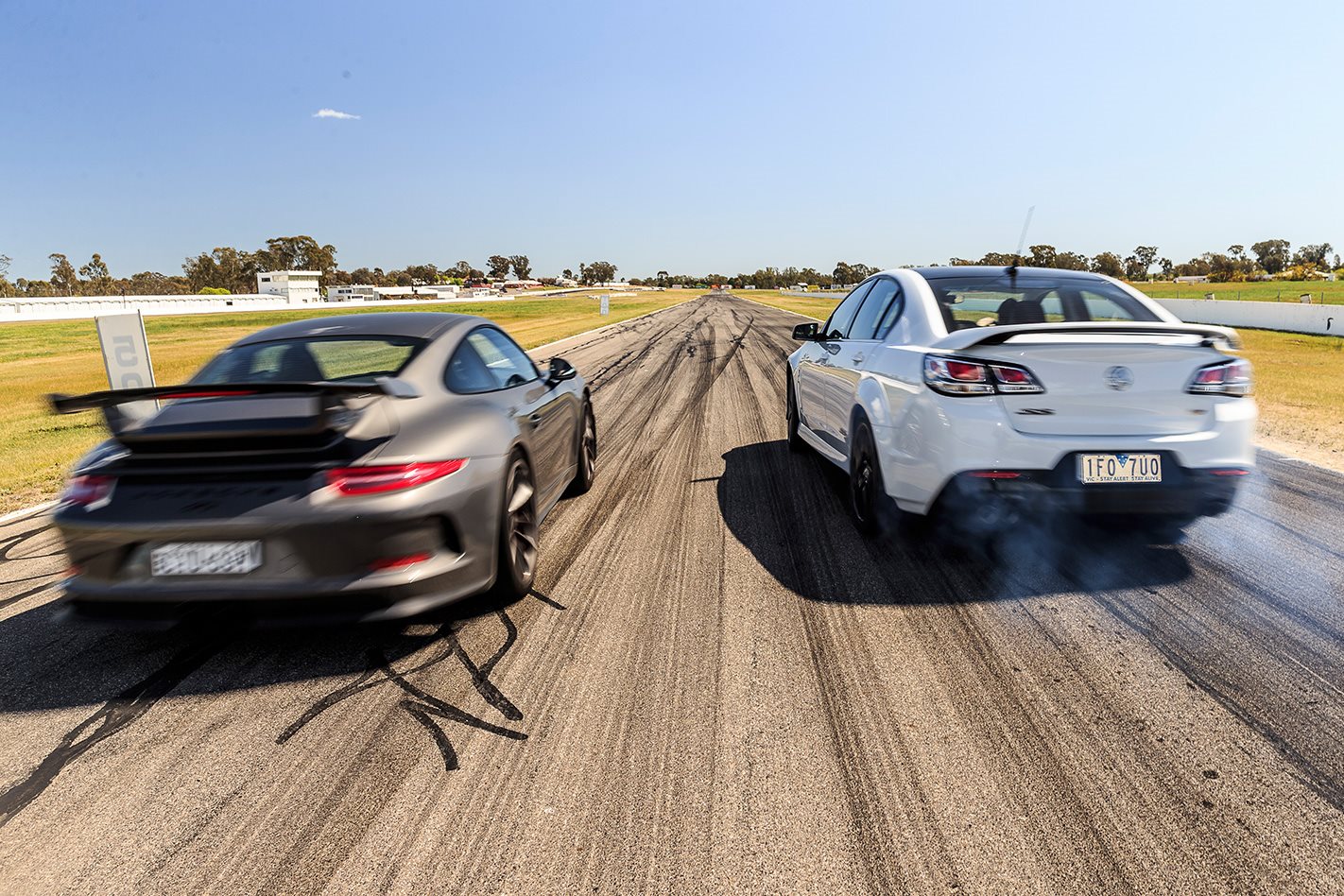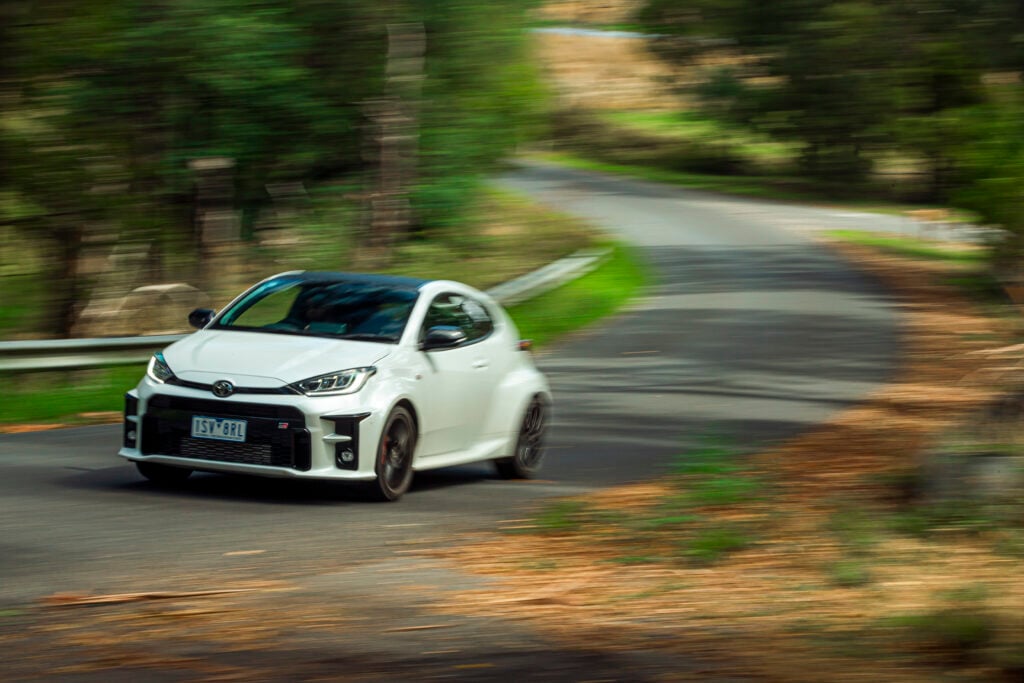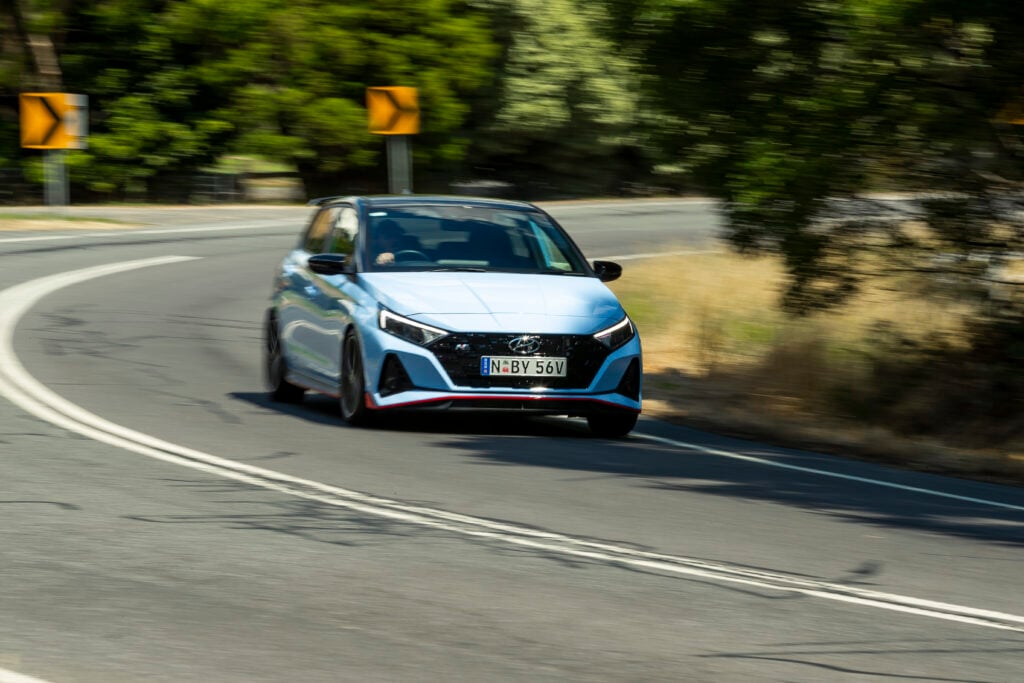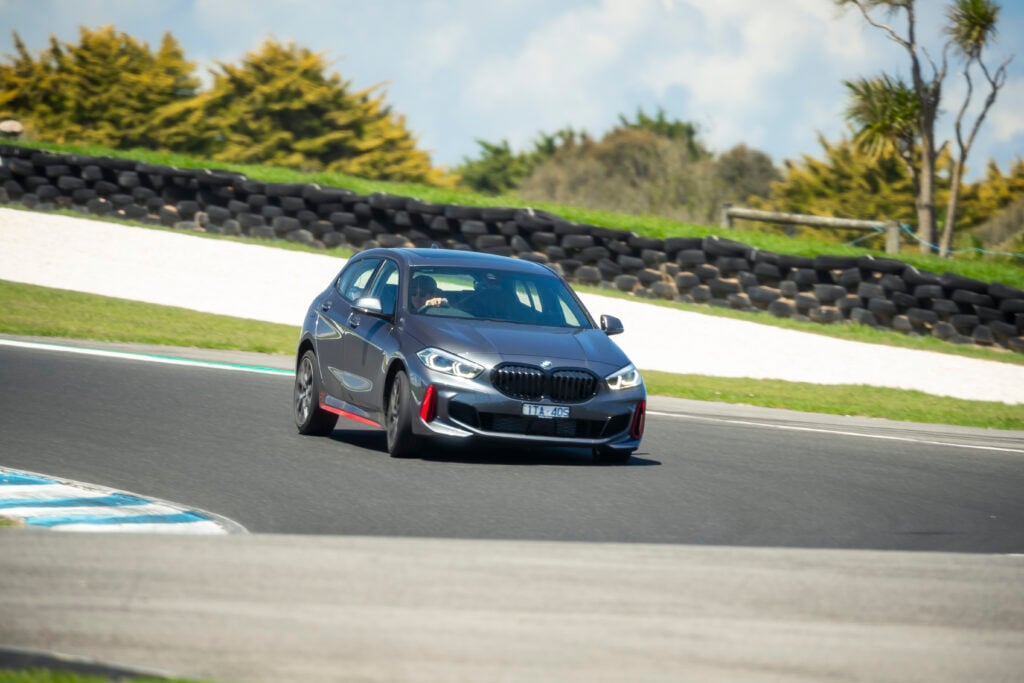Driving in a straight line, how hard can that be?
On the face of it, it’s the simplest of tasks, but anyone who’s had a bash at drag racing knows that extracting the best acceleration times from a car can be a frustrating job.
Crucial tenths are lost with every flare of wheelspin or fluffed shift, and it’s important to get it right – the value attached to ‘the numbers’ is enormous, and the world at large is never shy in voicing its opinion should it deem your efforts lacking.
To that end, at the risk of divulging trade secrets, here you’ll find the details of how we extract the best times from each car, their behaviour in the process and, should we not match the manufacturer claims, the reasons why not. One of those reasons is time.
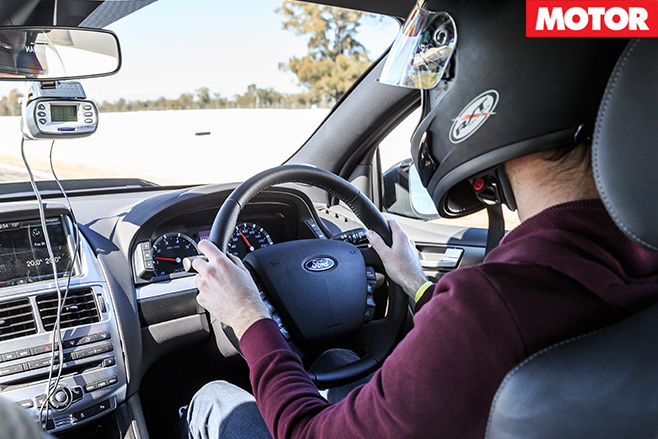
One factor working in our favour is the venue. It might not be a prepared track, but our makeshift Winton ‘strip’ – running in reverse direction from turn 11 – provides some quick times. There’s the small issue of a bumpy, dirty braking zone, and a ‘jump’ at the 400m mark (where Winton’s short track crosses over the long circuit) but more on that later. At least it keeps things interesting.
Foolproof all-wheel drive systems, tricky transmissions and clever launch control might have taken the skill out of performance testing some vehicles – step forward VW Golf R and Mercedes-AMG A45 – but that’s certainly not the case with the current crop of turbocharged front-drive hot hatches.

Loading the car against the handbrake and minimising wheelspin/axle tramp in first gear is the key to a good time, and 0-100km/h in 5.8sec and a 13.9sec quarter mile at 170.02km/h are very quick times for a front-drive hatch.
Unfortunately, the Megane is one of a number of cars that suffers from equipment failure – a dud memory card means we only have times to the nearest tenth rather than the usual hundredth for around half the field. Apologies, but these things happen.
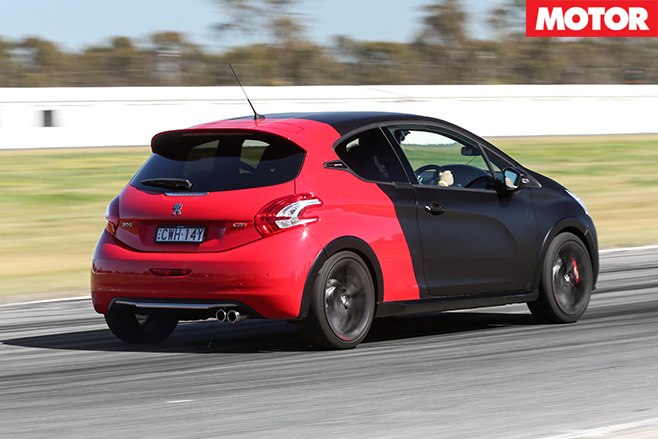
It may have an even smaller engine than the Pug, but BMW’s i8 is in a different league in terms of performance. With the 1.5-litre turbocharged three-cylinder ably assisted by electricity, the futuristic sportscar fires off the line with zero fuss, passing 100km/h in 4.6sec and the quarter mile in 12.7sec at 183.9km/h.
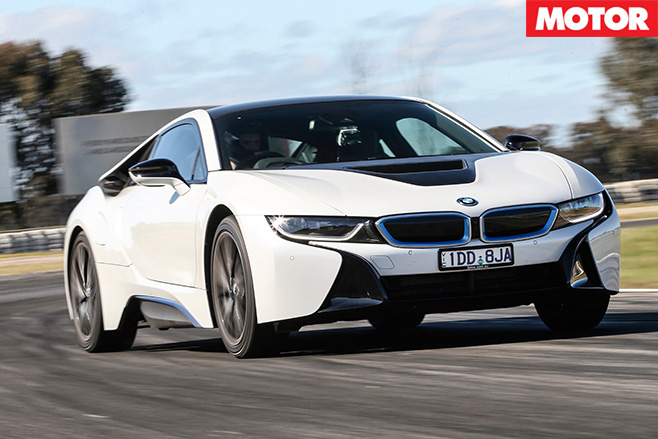
Also packing a 1.5-litre engine, though without the benefits of batteries or boost, is Mazda’s new MX-5. As the car with by far the least power and torque (57kW/150Nm down on the next lowest), there’s no prizes for guessing it earns the drag strip wooden spoon, however we’d bet that it’s faster than most will give it credit for.
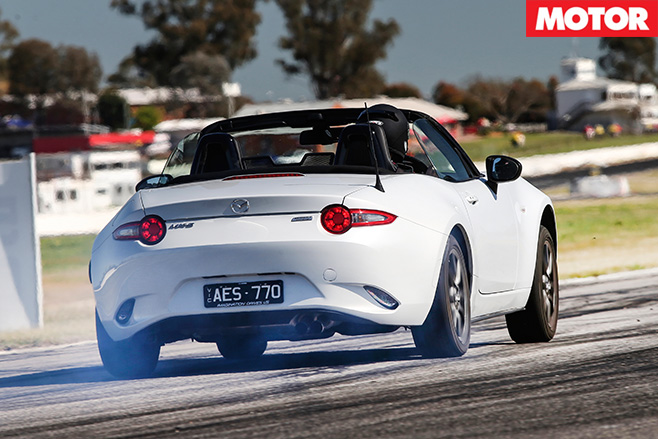
Lack of grunt isn’t a criticism that could ever be levelled at Ford’s supercharged Falcon XR8. The key to getting the blown brute off the line is to start in second gear – a trick also used by Ford’s testers as it turns out.
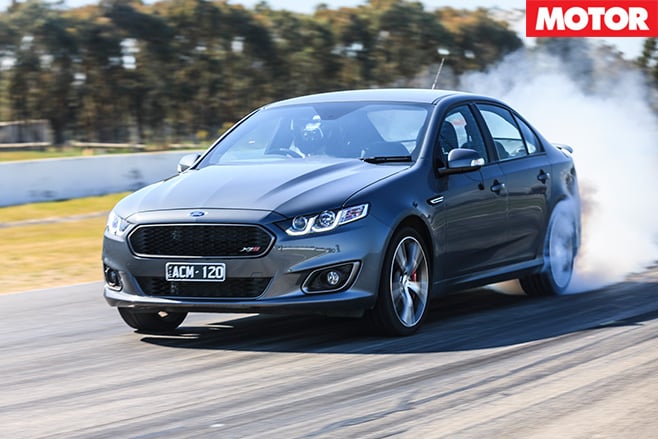
Once it’s off the line cleanly, only one gearchange is needed over the quarter, though the speed with which the XR8 revs from 5000-6000rpm means it’s easy to bash into the rev limiter.
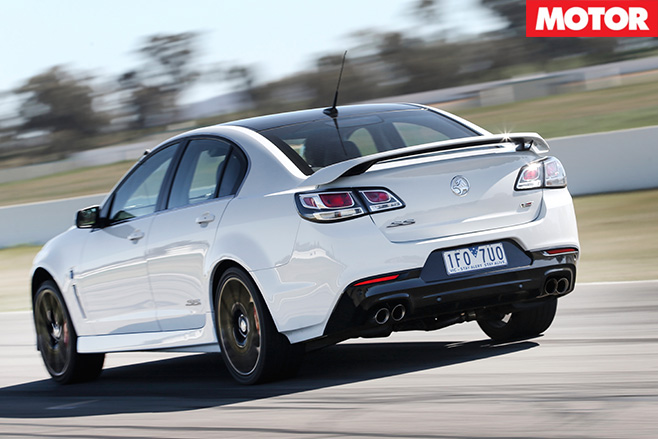
The system dials up 4000rpm, which merely sets off a furious struggle between the electronics and rear tyres as soon as the clutch is dropped, half-a-second being wasted in the process.
Dropping launch rpm to just over 2000rpm results in a clean getaway, and 0-100km/h in 5.0sec dead and a 13.1sec quarter at 179.4km/h. What’s more impressive is the experience from behind the wheel.
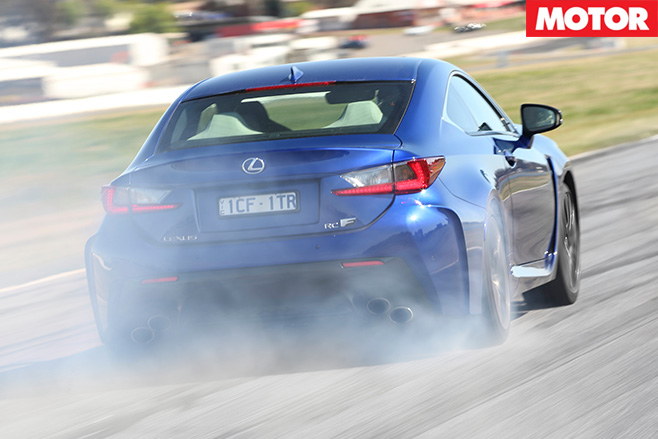
As is the Lexus RC F, if only by a whisker, which hammers home just what performance bargains our local V8s are. Cajoling Japan’s only V8 coupe off the line requires a bit of finesse on Morley’s part, who also says it doesn’t really feel that fast, but there’s no arguing with 0-100km/h in 4.75sec and a 12.86sec quarter mile at 182.38km/h. Sounds good, too. But imagine how fast it would be if it weighed 200kg less?
Faster than the new Mercedes-AMG C63 S, based on this evidence. But of all the cars at this year’s PCOTY, it’s Merc’s newly boosted C63 that proves most difficult to extract a representative number from. The culprit isn’t too difficult to identify: sending 700Nm through 265mm-wide rear rubber is always going to end in melted Michelins, and launch control only makes it worse.
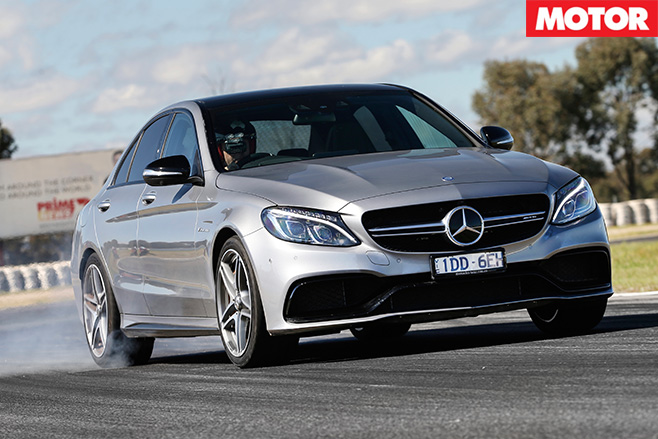
With 50Nm less torque and 295mm rear rubber, the identically-engined AMG GT S has less of an issue with power down but proves equally frustrating – the culprit this time, the gearbox.
For whatever reason, Race Start doesn’t want to play ball – though based on Morley’s experience in the C63, this is no great loss – and the electronics won’t let you stall it against the brakes, which leaves walking it off the line as your only option, though it’s probably the most effective.
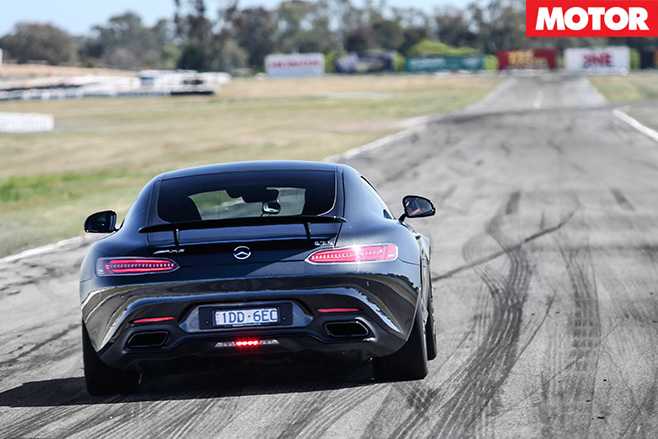
With a bit of practice and some heat in the sticky Michelin Cup tyres, however, it manages 0-100km/h in an impressive 4.0sec and an 11.8sec quarter mile at 202.6km/h, at which point it’s still pulling like a train. Boy does it hate bumps, though, constantly shifting side to side under brakes like it’s negotiating choppy seas.
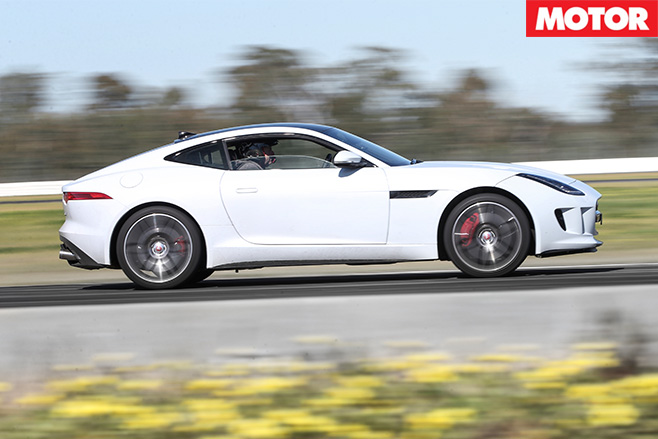
That honour goes to the Porsche 911 GT3. It might not strike you as a straight-line star on paper, but rear-engined traction and a finely-honed launch control system help it blitz the 0-100km/h sprint in just 3.55sec, while the feral flat-six’s outrageous top end means it never stops accelerating.
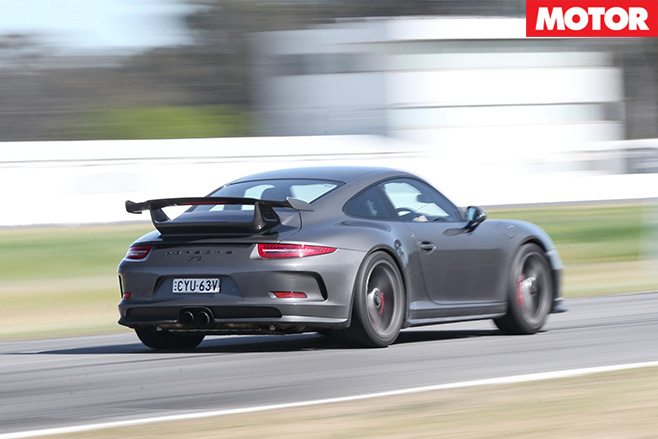
It mightn’t be the most comfortable ride – Morley swears he was airborne where the tracks cross over, and it didn’t like the bumps, either – but neither was it a particular challenge. Maybe this straight-line thing isn’t so tricky after all.
Behold, the numbers
0-100km/h
| 1st | Porsche 911 GT3 | 3.55sec |
| 2 | Jaguar F-Type R AWD | 3.75sec |
| 3 | Mercedes-AMG GT S | 4.00sec |
| 4 | BMW i8 | 4.60sec |
| 5 | Lexus RC F | 4.75sec |
| 6 | Mercedes-AMG C63 | 4.76sec |
| 7 | Ford Falcon XR8 | 4.80sec |
| 8 | Holden VF II Redline | 5.00sec |
| 9 | Renault Trophy-R | 5.80sec |
| 10 | Peugeot 208 30th | 6.60sec |
| 11 | Mazda MX-5 | 7.50sec |
0-400m
| 1st | Porsche 911 GT3 | 11.48sec |
| 2 | Mercedes-AMG GT Su00a0 | 11.80sec |
| 3 | Jaguar F-Type R AWD | 11.80sec |
| 4 | Mercedes-AMG C63 | 12.65sec |
| 5 | BMW i8 | 12.70sec |
| 6 | Ford Falcon XR8 | 12.80sec |
| 7 | Lexus RC F | 12.86sec |
| 8 | Holden VF II Redline | 13.10sec |
| 9 | Renault Trophy-R | 13.90sec |
| 10 | Peugeot 208 30th | 14.81sec |
| 11 | Mazda MX-5 | 15.40sec |
Terminal Speed
| 1st | Mercedes-AMG GT Su00a0 | 202.60km/h |
| 2 | Porsche 911 GT3 | 201.60km/h |
| 3 | Mercedes-AMG C63 | 194.40km/h |
| 4 | Jaguar F-Type R AWD | 193.35km/h |
| 5 | BMW i8 | 183.90km/h |
| 6 | Ford Falcon XR8 | 183.10km/h |
| 7 | Lexus RC F | 182.38km/h |
| 8 | Holden VF II Redline | 179.40km/h |
| 9 | Renault Trophy-R | 170.02km/h |
| 10 | Peugeot 208 30th | 156.73km/h |
| 11 | Mazda MX-5 | 142.80km/h |


